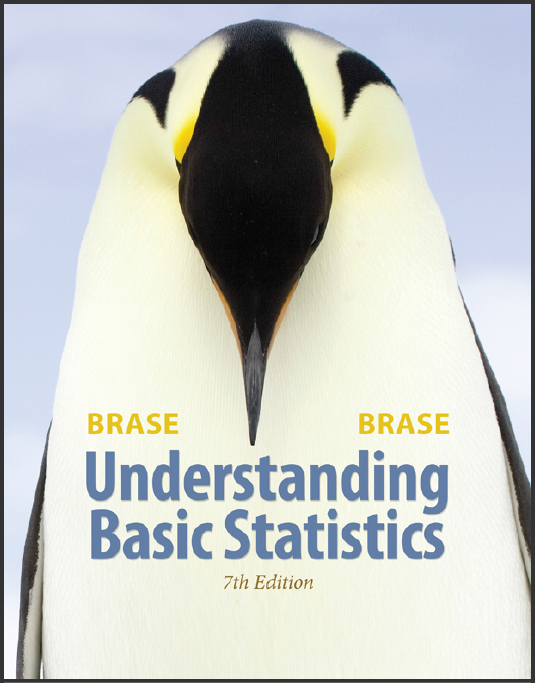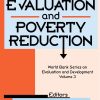Soltion Manual For Understanding Basic Statistics 7th Edition Charles Henry Brase ISBN 1305254066 9781305254060
$70.00 Original price was: $70.00.$35.00Current price is: $35.00.
Instant download (Soltion Manual) Understanding Basic Statistics 7th Edition Charles Henry Brase; after payment
Soltion Manual For Understanding Basic Statistics 7th Edition Charles Henry Brase – Ebook PDF Instant Download/Delivery: 1305254066, 9781305254060
Full dowload Understanding Basic Statistics 7th Edition after payment

Product details:
ISBN 10: 1305254066
ISBN 13: 9781305254060
Author: Charles Brase
Help students overcome their apprehension about statistics with Brase and Brase’s UNDERSTANDING BASIC STATISTICS. A condensed and more streamlined version of the same authors’ bestselling UNDERSTANDABLE STATISTICS, Eleventh Edition, this book offers instructors an effective way to teach the essentials of statistics, including early coverage of regression, within a more limited time frame. Thorough yet abbreviated, the text helps students realize the real-world significance of statistics, and offers an accessible exposition and a complete technology package. The Seventh Edition addresses the growing importance of developing students’ critical thinking and statistical literacy skills with critical thinking features and new exercises throughout the text. The use of the graphing calculator, Microsoft® Excel®, MINITAB®, and SPSS® is covered but not required. The text is packaged with JMP® statistical software.
Understanding Basic Statistics 7th Table of contents:
1. Getting Started
Section 1.1. What Is Statistics?
Introduction
Levels of Measurement: Nominal, Ordinal, Interval, Ratio
Section 1.1 Problems
Section 1.2. Random Samples
Simple Random Samples
Other Sampling Techniques
Section 1.2 Problems
Section 1.3. Introduction to Experimental Design
Planning a Statistical Study
Experiments and Observation
Surveys
Choosing Data Collection Techniques
Section 1.3 Problems
Summary
Important Words & Symbols
Chapter Review Problems
Data Highlights: Group Projects
Linking Concepts: Writing Projects
Using Technology
2. Organizing Data
Section 2.1. Frequency Distributions, Histograms, and Related Topics
Frequency Tables
Histograms and Relative-Frequency Histograms
Distribution Shapes
Cumulative-Frequency Tables and Ogives
Section 2.1 Problems
Section 2.2. Bar Graphs, Circle Graphs, and Time-Series Graphs
Section 2.2 Problems
Section 2.3. Stem-and-Leaf Displays
Exploratory Data Analysis
Stem-and-Leaf Display
Section 2.3 Problems
Summary
Important Words & Symbols
Chapter Review Problems
Data Highlights: Group Projects
Linking Concepts: Writing Projects
Using Technology
3. Averages and Variation
Section 3.1. Measures of Central Tendency: Mode, Median, and Mean
Weighted Average
Section 3.1 Problems
Section 3.2. Measures of Variation
Variance and Standard Deviation
Rounding Note
Coefficient of Variation
Chebyshev’s Theorem
Section 3.2 Problems
Section 3.3. Percentiles and Box-and-Whisker Plots
Box-and-Whisker Plots
Section 3.3 Problems
Summary
Important Words & Symbols
Chapter Review Problems
Data Highlights: Group Projects
Linking Concepts: Writing Projects
Using Technology
Chapters 1-3: Cumulative Review Problems
4. Correlation and Regression
Section 4.1. Scatter Diagrams and Linear Correlation
Sample Correlation Coefficient r
Development of Formula for r
Computation Formula for r
Section 4.1 Problems
Section 4.2. Linear Regression and the Coefficient of Determination
Comment
Coefficient of Determination
Section 4.2 Problems
Summary
Important Words & Symbols
Chapter Review Problems
Data Highlights: Group Projects
Linking Concepts: Writing Projects
Using Technology
5. Elementary Probability Theory
Section 5.1. What is Probability?
Interpreting Probabilities
Probability Related to Statistics
Section 5.1 Problems
Section 5.2. Some Probability Rules—Compound Events
Conditional Probability and Multiplication Rules
Addition Rules
Further Examples Using Contingency Tables
Section 5.2 Problems
Section 5.3. Trees and Counting Techniques
Section 5.3 Problems
Summary
Important Words & Symbols
Chapter Review Problems
Data Highlights: Group Projects
Linking Concepts: Writing Projects
Using Technology
6. The Binomial Probability Distribution and Related Topics
Section 6.1. Introduction to Random Variables and Probability Distributions
Random Variables
Probability Distribution of a Discrete Random Variable
Section 6.1 Problems
Section 6.2. Binomial Probabilities
Binomial Experiment
Computing Probabilities for a Binomial Experiment Using the Binomial Distribution Formula
Using a Binomial Distribution Table
Using Technology to Compute Binomial Probabilities
Sampling without Replacement: Use of the Hypergeometric Probability Distribution
Section 6.2 Problems
Section 6.3. Additional Properties of the Binomial Distribution
Graphing a Binomial Distribution
Mean and Standard Deviation of a Binomial Distribution
Section 6.3 Problems
Summary
Important Words & Symbols
Chapter Review Problems
Data Highlights: Group Projects
Linking Concepts: Writing Projects
Using Technology
Chapter 4-6: Cumulative Review Problems
7. Normal Curves and Sampling Distributions
Section 7.1. Graphs of Normal Probability Distributions
Section 7.1 Problems
Section 7.2. Standard Units and Areas Under the Standard Normal Distribution
z Scores and Raw Scores
Standard Normal Distribution
Areas Under the Standard Normal Curve
Using a Standard Normal Distribution Table
Section 7.2 Problems
Section 7.3. Areas Under Any Normal Curve
Normal Distribution Areas
Inverse Normal Distribution
Section 7.3 Problems
Section 7.4. Sampling Distributions
Section 7.4 Problems
Section 7.5. The Central Limit Theorem
The x ¯ Distribution, Given x is Normal
The x ¯ Distribution, Given x Has Any Distribution
Section 7.5 Problems
Section 7.6. Normal Approximation to Binomial Distribution and to p ^ Distribution
Sampling Distributions for Proportions
Section 7.6 Problems
Summary
Important Words & Symbols
Chapter Review Problems
Data Highlights: Group Projects
Linking Concepts: Writing Projects
Using Technology
8. Estimation
Section 8.1. Estimating μ When σ Is Known
Sample Size for Estimating the Mean μ
Section 8.1 Problems
Section 8.2. Estimating μ When σ Is Unknown
Student’s t Distributions
Using Table 4 to Find Critical Values for Confidence Intervals
Confidence Intervals for μ When σ Is Unknown
Section 8.2 Problems
Section 8.3. Estimating p in the Binomial Distribution
Interpreting Results from a Poll
Sample Size for Estimating p
Section 8.3 Problems
Summary
Important Words & Symbols
Chapter Review Problems
Data Highlights: Group Projects
Linking Concepts: Writing Projects
Using Technology
9. Hypothesis Testing
Section 9.1. Introduction to Statistical Tests
Stating Hypotheses
Types of Tests
Hypothesis Tests of μ , given x is Normal and σ is Known
The P -Value of a Statistical Test
Types of Errors
Concluding a Statistical Test
Section 9.1 Problems
Section 9.2. Testing the Mean μ
Part I: Testing μ When σ is Known
Part II: Testing μ When σ is Unknown
Part III: Testing μ Using Critical Regions (Traditional Method)
Section 9.2 Problems
Section 9.3. Testing a Proportion p
Section 9.3 Problems
Summary
Finding the P -value Corresponding to a Sample Test Statistic
Important Words & Symbols
Chapter Review Problems
Data Highlights: Group Projects
Linking Concepts: Writing Projects
Using Technology
Chapters 7-9: Cumulative Review Problems
10. Inferences about the Differences
Section 10.1. Tests Involving Paired Differences (Dependent Samples)
Section 10.1 Problems
Section 10.2. Inferences about the Difference of Two Means μ 1 – μ 2
Independent Samples
Section 10.2 Problems
Section 10.3. Inferences about the Difference of Two Proportions p 1 – p 2
Testing a Difference of Proportions p 1 – p 2
Estimating a Difference of Proportions p 1 – p 2
Section 10.3 Problems
Summary
Important Words & Symbols
Chapter Review Problems
Data Highlights: Group Projects
Linking Concepts: Writing Projects
Using Technology
11. Additional Topics Using Inference
Part I. Inferences Using the Chi-Square Distribution
Overview of the Chi-Square Distribution
Section 11.1. Chi-Square: Tests of Independence and of Homogeneity
Tests of Homogeneity
Section 11.1 Problems
Section 11.2. Chi-Square: Goodness of Fit
Section 11.2 Problems
Section 11.3. Testing a Single Variance or Standard Deviation
Testing σ 2
Section 11.3 Problems
Part II. Inferences Relating to Linear Regression
Section 11.4. Inferences for Correlation and Regression
Testing the Correlation Coefficient
Standard Error of Estimate
Inferences about the Slope β
Computation Hints
Confidence Intervals for Y
Section 11.4 Problems
People also search for Understanding Basic Statistics 7th:
understanding basic statistics answers
understanding basic statistics 8th edition answer key pdf
introduction to statistics and data analysis solutions manual pdf
basic statistics problems and solutions pdf


